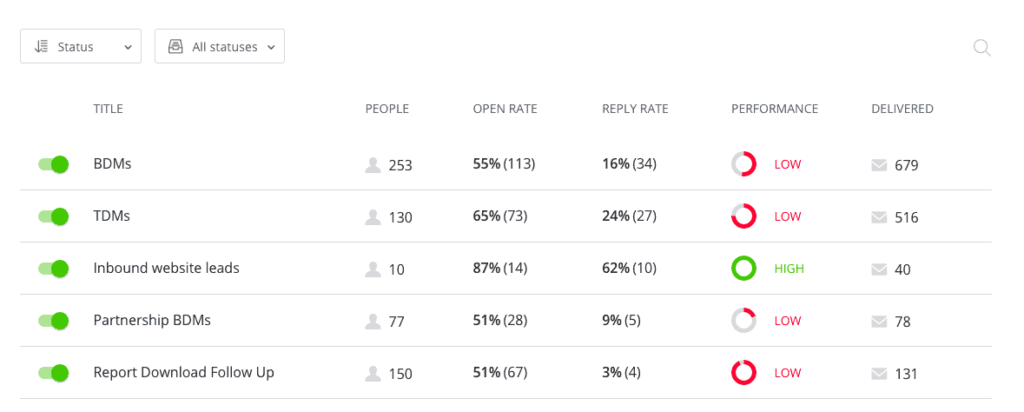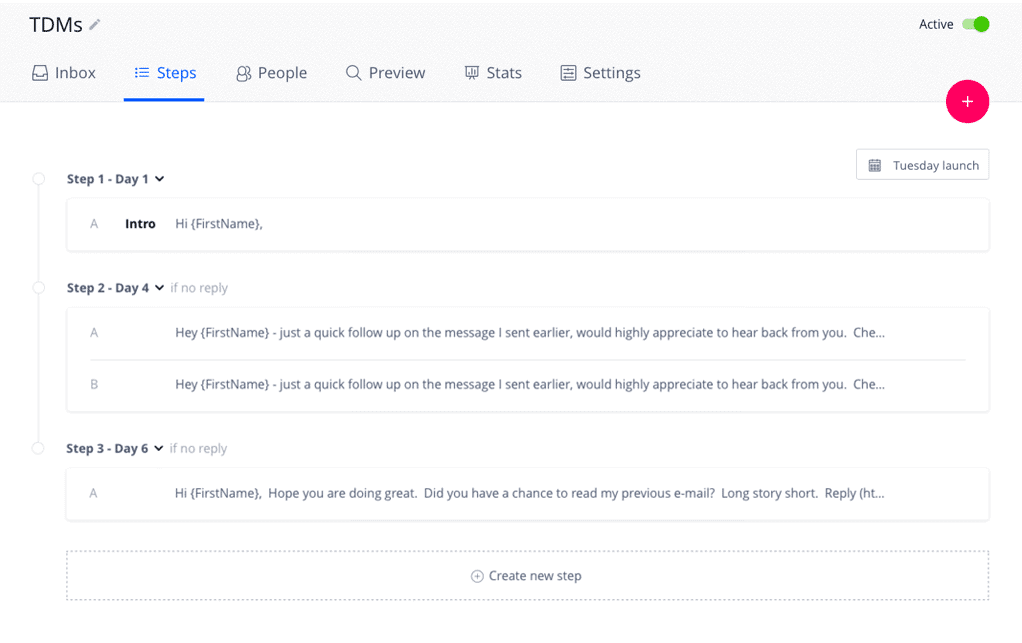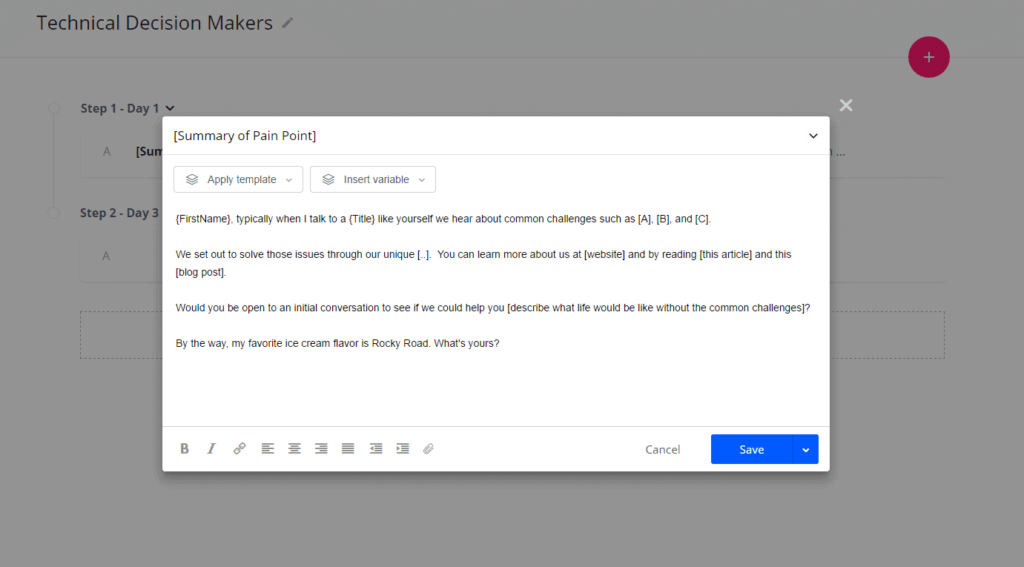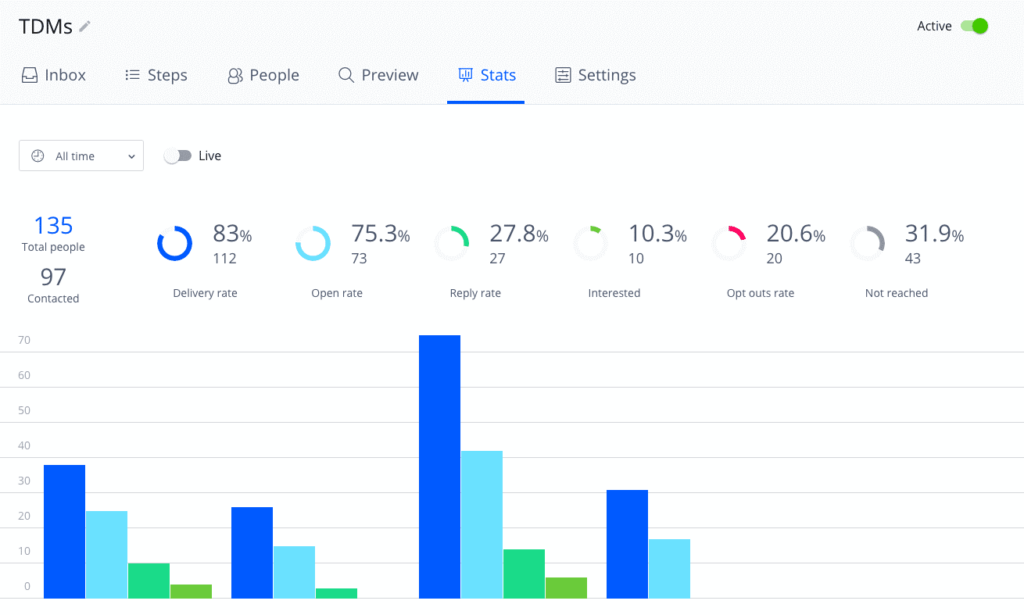You’re sitting in the cockpit at the end of the runway.
You’ve spent hours in the flight simulator, countless in-flight training hours, and done all your background training.
You’ve punched your coordinates into the navigation system and have a clear destination.
Now it all comes down to the moment of truth: the control tower has cleared you for takeoff and it’s time to go…
Just like the pilot at the helm of an aircraft, you’re in control of the journey towards reaching your sales goals. Instead of a geographical destination, you have a quota.
Just like a flight may alter its route mid-air as needed, so must you be ready to adapt.
Your aircraft is Reply, and just as the jet revolutionized travel, this powerful platform will revolutionize your sales productivity and effectiveness.
I’m going to share my most recent Reply “flight plan” in which I created an inaugural outbound pipeline filled with over 35 qualified opportunities and closed the first deal within the first 60 days.
Last fall, AcousticSelling was hired by a pre-seed funded SAAS technology company, both to establish its initial sales infrastructure, and to do the actual selling.
Typical of most startups, the founders worked their networks to sign up initial clients.
Also typical of most startups, they soon realized they needed to scale faster in order to reach longer term company goals.
There were just too many contacts and follow ups to keep track of manually, which were difficult to organize amid all the other responsibilities of running a startup.
We knew that in order to reach our goals with our limited resources, we needed to automate and chose Reply for its ease of implementation, feature set, and overall value.
By the end of our two-week trial, we were up and running at full speed.
Here were the key steps to our plan:
1. Identify the Ideal Customer Profile and Build Relevant Campaigns
I cannot overstate the importance of getting this step right. Our client was fortunate enough to have a product that solves a clear pain point for clearly defined roles.
Our Technical Decision Makers (TDMs) are VPs of Operations whose teams waste precious time and resources under the status quo; Business Decision Makers (BDMs) are VPs of Sales whose revenue stability depends on smooth operations.
These roles exist at two different types of prospect companies: publishers and exchanges.
Therefore, we created 4 separate campaigns to speak to these audiences.

Notice that we also created a campaign to automate the follow up on inbound website leads. Everything else is outbound.
2. Targeted Campaigns for Each Buyer Type
- Determine cadence;
- Keep it short, professional, and fun;
- Test multiple variations.
When we started building out our campaigns, Reply hadn’t launched direct calls yet.
So we initially set all our steps for email spaced 3-4 days apart.
We deliberately ended each campaign at 30 days with an “If your needs change” email, intended to close out the cycle while also keeping the door open to future communications.
We made sure to remind our prospects about opting out.
Not only is it the right thing to do, but most people appreciate the transparency and control over their inbox.

We achieved a greater than 50% open rate by targeting the right prospect with the right message.
We deliberately kept the messages short, professional, and fun.
Throughout the whole process, keep asking yourself “If I were the prospect, would I open this? Would I respond?” Ask your colleagues to do the same.

3. Review Results at Least Weekly
By now, we’re climbing towards our cruising altitude and need to carefully monitor that we’re on the right track.
I recommend accessing your campaign dashboards at least weekly to observe the consistency and adequacy of your results.
Make as many tweaks and adjustments as necessary.

We found that our results quickly converged to a consistent rate of 6 out of every 100 people contacted resulting in a qualified opportunity.
This leads to the last tip.
4. Connect to your CRM to Understand Downstream Success
Reply easily connected to our CRM of record (Salesforce Professional with API access) and made it easy for us to create and populate opportunities from the interested replies.
Most importantly, this connection allowed us to accurately measure the ultimate sales impact of our efforts.
For example, connecting the two systems gives us insight into which campaigns create the most opportunities, yield the highest close rates with the highest average sales price, and close within the shortest amount of time.
Cruising Altitude: In Conclusion
We knew we could remove our seatbelts and freely move about the cabin once our Reply and Salesforce metrics stabilized into a consistent range.
What this meant, is that each day began with a predictable amount of new opportunities.
Without the stress and time consumption of increasing the number of outbound deals my pipeline, I could focus on effectively moving those opportunities through the pipeline.
Essentially, I was my own Sales Development Rep.
By my estimate, I increased sales productivity around 5x by using Reply to eliminate redundant, time consuming tasks and reach more prospects, more frequently, than would ever be possibly manually.
While we’re always prepared for turbulence, our experience with Reply has made it a joy to fly the friendly skies.
If you’re interested in booking your own flight, please email info@acousticselling.com.
Kevin Ascher
Kevin Ascher is the Founder & President of AcousticSelling, a company that makes sales teams more productive and effective by providing independent advice on the selection and activation of technologies that lead to lasting change.



![Full Guide On Mass Email Campaigns in 2024 [+Best Mass Email Service Platforms] Full Guide On Mass Email Campaigns in 2024 [+Best Mass Email Service Platforms]](https://reply.io/wp-content/uploads/Guide-On-Mass-Email-Campaigns-in-2024-1024x538.jpg)

